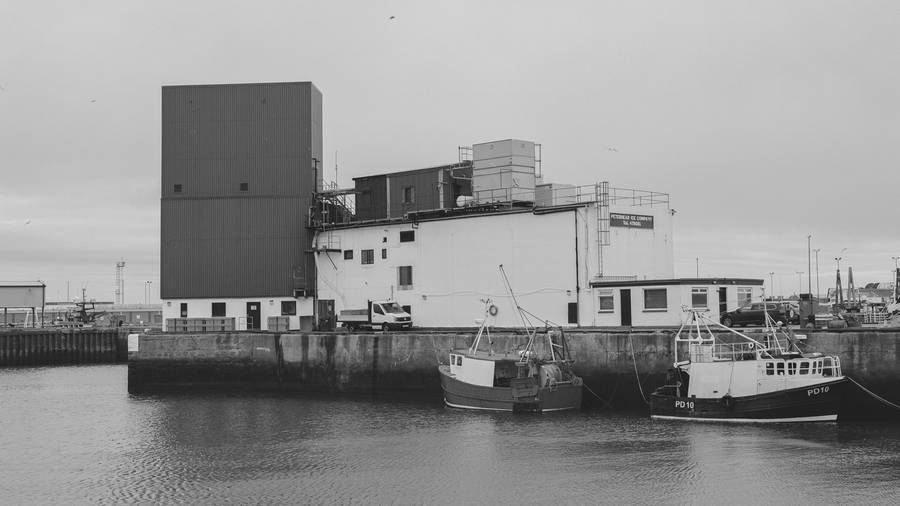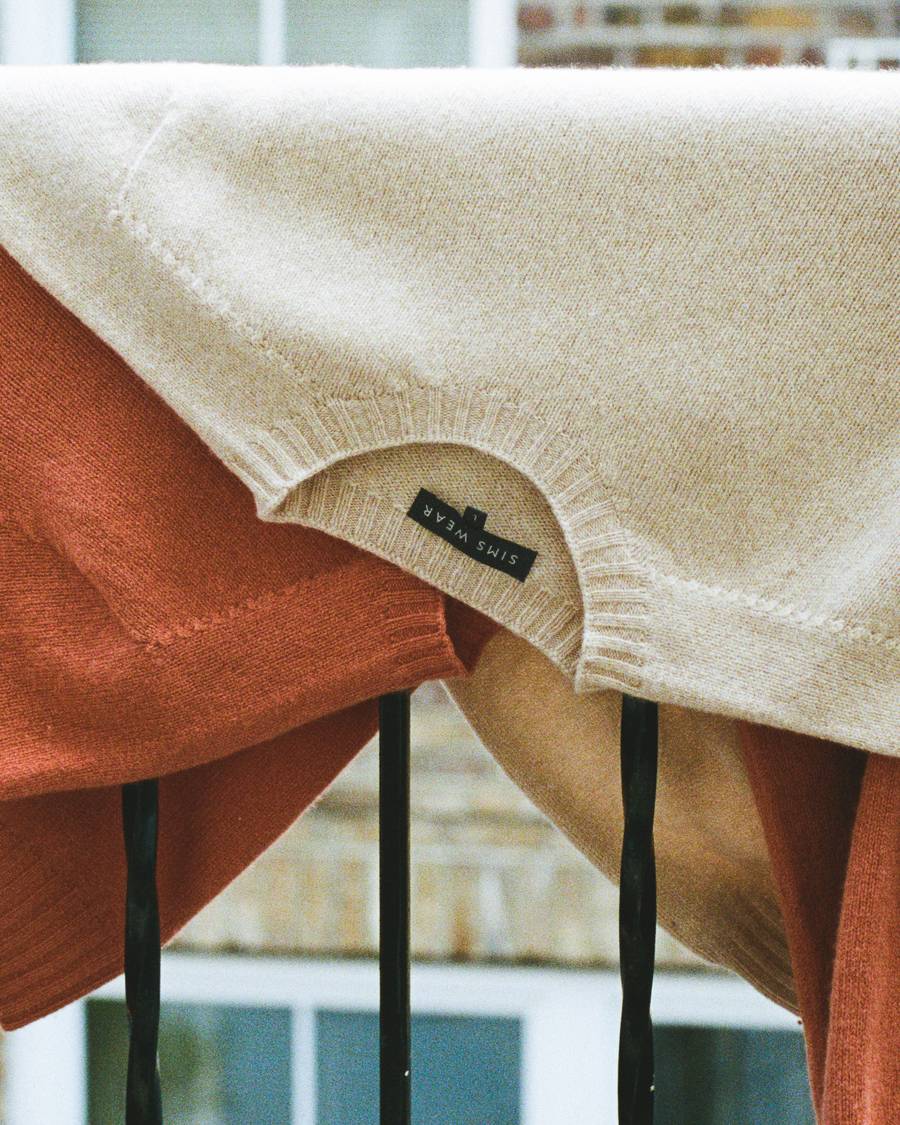
- 30 Mar 2022
Reflections on Scotland and functionality.
A brief excursion into the depths of Aberdeenshire, visiting the town where our sweaters are made.
The journey up to Aberdeenshire seems close on a map but reaching Manchester and finding another 6.5 hrs to go, it doesn’t feel that way. Time goes by and Edinburgh is left behind. I look to my left out the window and see through the low-slung cloud the snow-capped peaks of the Cairngorms. If I had time to spare, I would be excited to take the A93 up towards Braemar for a hike. I remind myself that I only have one short day at my destination, and the last leg of the journey calls.
Waking up in the Scottish coastal town where our knitwear is made, it is evident that much of its character is found in its harsh functionality. Old fishermen’s homes made of giant grey granite blocks, built to weather the North Sea winter storms; an expansive working harbour which for centuries has been a hive of activity supporting the local community and supplying the British Isles; and a nearby lighthouse which, for generations, has safely guided vessels through the thick sea fog often found on these shores.


Everything I find here is purposeful. The town hall is without gaudy columns or gilt statues. It is central, stands tall and proud. Many of the buildings survive from the late 18th Century. They are built in a way that does not immediately draw the eye, but at a second glance you can see the craftsmanship and fine materials used which have gone into their making. It’s not hard to imagine how similar they would have looked over 200 years ago when new.


When visiting the factory, I meet Susannah and John who together run the whole operation. Susannah’s grandfather started making jumpers in the 1920’s. When I ask her about his career change from fishing to knitting, she explains how knitwear has been a fundamental staple of fishermen’s wardrobes for hundreds of years, so making jumpers wasn’t in fact so far-fetched. Since wool is one of the only materials that can retain heat when wet, it makes an ideal material for the harsh environment on the Scottish coastal fishing boats. The abundance of Shetland wool meant it was accessible, and to this day they still knit using Shetland wool. For Sims Wear, we chose Merino Lambswool thanks to its softer handle in comparison to its Scottish cousin.


This area of Scotland has many defining features, but for me the hidden beauty that stands out here is its functionality. Throughout the region they seem to have adopted values of longevity and quality out of necessity, thanks to the harsh environment that they find themselves in. This inevitably has trickled through to the manufacturing of our Sims Wear jumpers. They are made using the finest materials and methods to ensure they stand the test of time.
When leaving Scotland I think about my short visit. It has reinforced my ideas of how Sims Wear should be when looking forwards; strong yet subtle, prominent yet understated, beautiful yet functional. If we can excel here, I hope we can follow in the direction of those 18th Century granite houses.
Billy Sims-Hilditch.